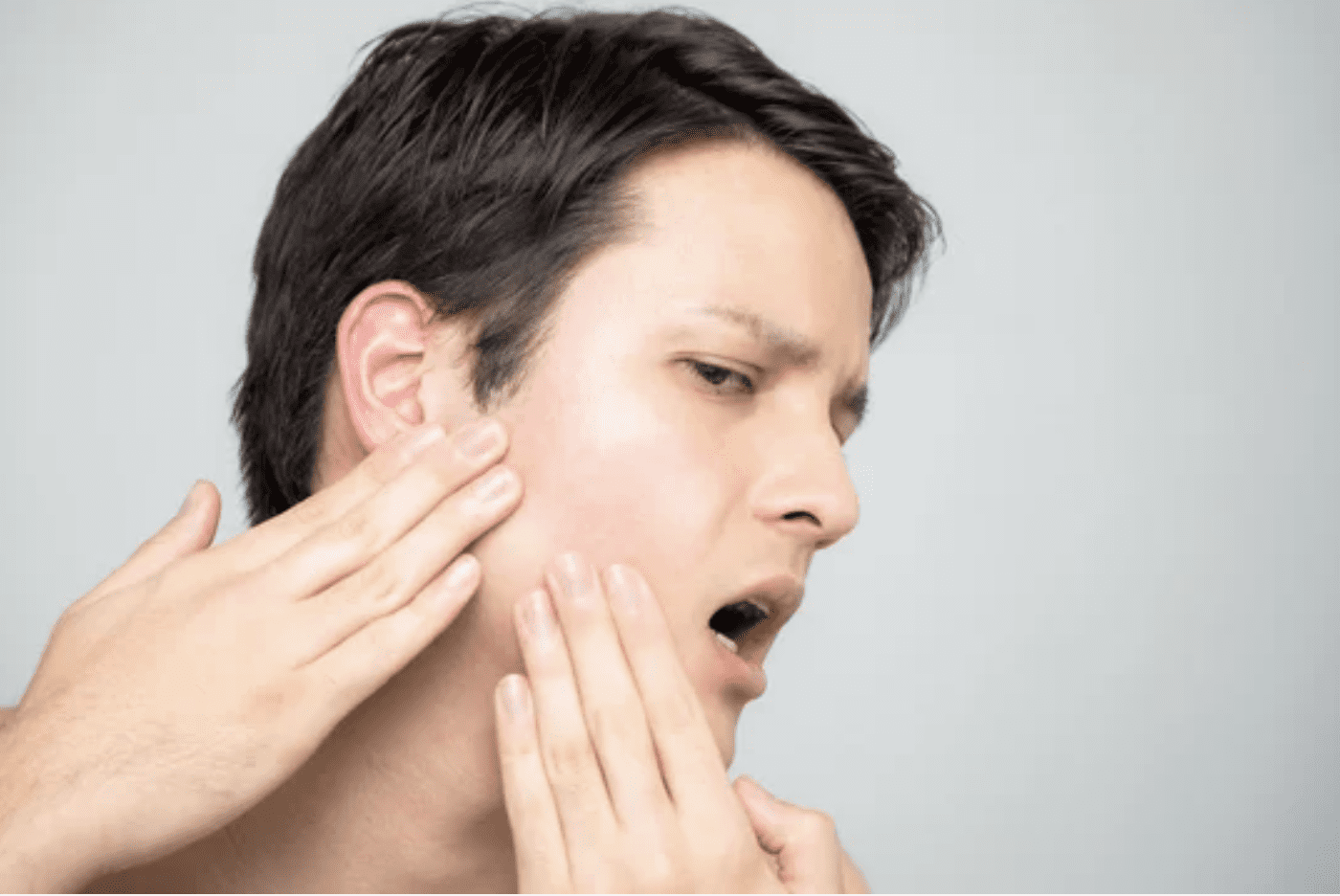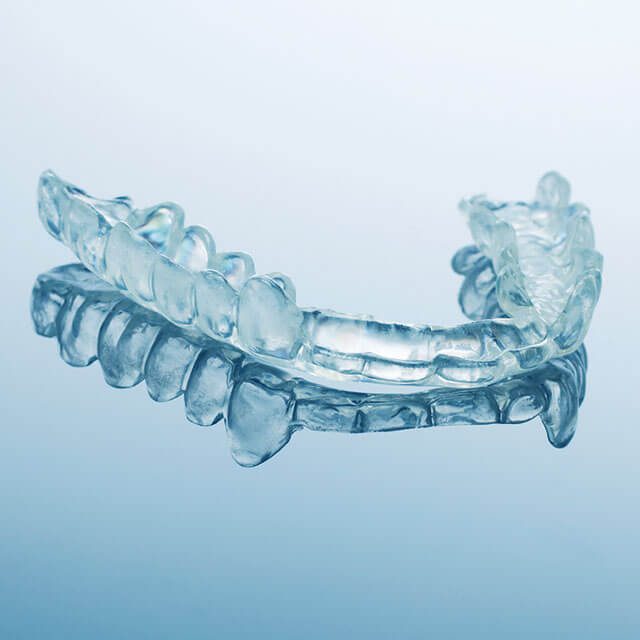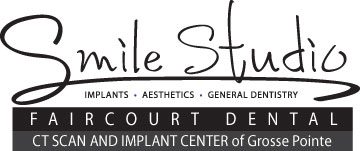TMJ Disorder
TMJ DISORDER IN GROSSE POINTE, MI

TMJ DISORDER
Temporomandibular joint and muscle disorders, commonly called “TMJ,” are a group of conditions that cause pain and dysfunction in the jaw joint and the muscles that control jaw movement. We don’t know for certain how many people have TMJ disorders, but some estimates suggest that over 10 million Americans are affected.
The condition appears to be more common in women than men. For most people, pain in the area of the jaw joint or muscles does not signal a serious problem. Generally, discomfort from these conditions is occasional and temporary, often occurring in cycles. The pain eventually goes away with little or no treatment. Some people, however, develop significant, long-term symptoms.
WHAT CAUSES TMD AND MIGRAINES?
There are many symptoms associated with TMD, such as:
- Stiff jaw muscles
- Jaw, face, and neck pain
- Clicking noises when moving your jaw
- Lockjaw, or being unable to open your jaw
- Misaligned teeth
- Headaches or migraines
At the same time, there are a number of factors that can lead to migraines. These may include:
- Cervical spine misalignment
- Nutritional imbalances
- Pinched airways
- Nutritional imbalances
- Lack of sleep or significant rest
While all of these symptoms can result in migraines, one of the most common causes is bruxism, or repeatedly clenching or grinding your teeth, especially at night while you sleep. If left untreated, bruxism may eventually wear down your enamel, leading to tooth loss and even TMD — which, in turn, can trigger migraines.
finding the relief
YOU NEED
If you’ve been diagnosed with TMD or are experiencing migraines, Dr. Stonisch offers various solutions to get you the help you need.

THE KOIS DEPROGRAMMER
To correct your bite problem, Dr. Stonisch may recommend a Kois deprogrammer to kickstart your treatment. It’s a simple, effective device that’s similar to an orthodontic retainer, and it’s worn for two to three weeks for 24 hours a day. You can remove it when it’s time for a meal or to brush your teeth, however.
The Kois deprogrammer is positioned on the roof of your mouth and secured with a wire that fits around the outer surface of your teeth. This device “deprograms” tense jaw muscles by preventing your teeth from touching, allowing your muscles to relax.
After the required treatment time is completed, your muscles will no longer push on the jaw joint and cause discomfort or pain. The deprogrammer won’t solve your bite problem, but it allows Dr. Stonisch to assess your bite and determine the best solution for you.
While all of these symptoms can result in migraines, one of the most common causes is bruxism, or repeatedly clenching or grinding your teeth, especially at night while you sleep. If left untreated, bruxism may eventually wear down your enamel, leading to tooth loss and even TMD — which, in turn, can trigger migraines.
standard,
EFFECTIVE TECHNIQUES
After your bite is properly assessed, Dr. Stonisch can recommend one of the following treatment options that we offer at our practice in Grosse Pointe Woods:
1. BITE ADJUSTMENT
To ensure your teeth are aligned and touch without pressure, teeth are sometimes thinned, built-up, or leveled. This will alleviate pressure or friction when you bite or chew, allowing your jaw to open and close properly.
2. BRACES
This orthodontic treatment can shift the upper teeth to make room for the lower teeth. Dr. Stonisch can also modify the amount of tooth structure in between the contacts, allowing narrower teeth to fit better.
3. OVERLAYS
We can use porcelain or resin to build up the back teeth to increase their height and open up the bite. This can either reduce the pressure on the front teeth or correct the issue by improving support on the back teeth.
4. JAW SURGERY
Dr. Stonisch may recommend surgery when there’s no other way to correct the problem. This includes wiring the jaws shut and it typically requires a long recovery over the course of several weeks.
5. BOTOX®
This is an effective treatment for patients experiencing bite problems or TMD caused by bruxism. Botox reduces the strength of contractions in the muscles that work the jaws while grinding. In turn, pressure on your teeth and potential damage is reduced.
6. BITE GUARDS
To temporarily protect your teeth, a bite guard will reduce teeth and jaw joint damage. Keep in mind, it won’t solve your bite problems but rather prevent additional damage as we prepare you for more definitive treatment.
FREQUENTLY ASKED QUESTIONS
ABOUT TMJ & MIGRAINE THERAPY
To treat TMJ disorder, Dr. Stonisch offers effective treatments, like oral devices or other oral procedures to relieve pain and discomfort. Surgery may be necessary to treat severe symptoms of TMJ, but we’ll examine the cause of your pain to determine the best course of action. With an extensive education in TMJ, Dr. Stonisch is ready to help you get a good night’s rest and wake up to a pain-free morning.”
Temporomandibular joint (TMJ) symptoms can last anywhere from a few days to a few weeks. If the underlying problem isn’t treated, symptoms can be chronic and last years. It’s important to contact Dr. Stonisch if you’re experiencing pain due to TMJ or migraines.
To schedule an appointment, give us a call at (313) 882-2000 so we can relieve your discomfort and help you rediscover what it’s like to wake up pain-free.
When you experience the onset of a migraine, the effects can be unnerving. Some helpful tips to treat migraines include drinking a caffeinated beverage, applying a cold or warm compress, turning off the lights, or taking over-the-counter pain relievers.
Bruxism is a common cause of migraines, which is characterized by clenching or grinding of the teeth. If you’re experiencing bruxism, contact our practice to schedule an appointment with Dr. Stonisch so she can examine your condition and discuss your treatment options. We’ll get to the root of the problem and prevent any further complications.
Migraines can last anywhere from four hours to several days. If you’re experiencing migraines, give us a call at (313) 882-2000 and Dr. Stonisch will review your medical history and recommend the most effective treatment for your condition.
here are several ways to prevent migraines, such as establishing a healthy bedtime routine, managing stress, and receiving professional care. Migraines may be due to underlying issues caused by bruxism, or teeth grinding. If that’s the case, Dr. Stonisch can treat bruxism with a custom-made, portable oral device. During your free consultation, Dr. Stonisch will assess the cause of your migraines and discuss your treatment options.


